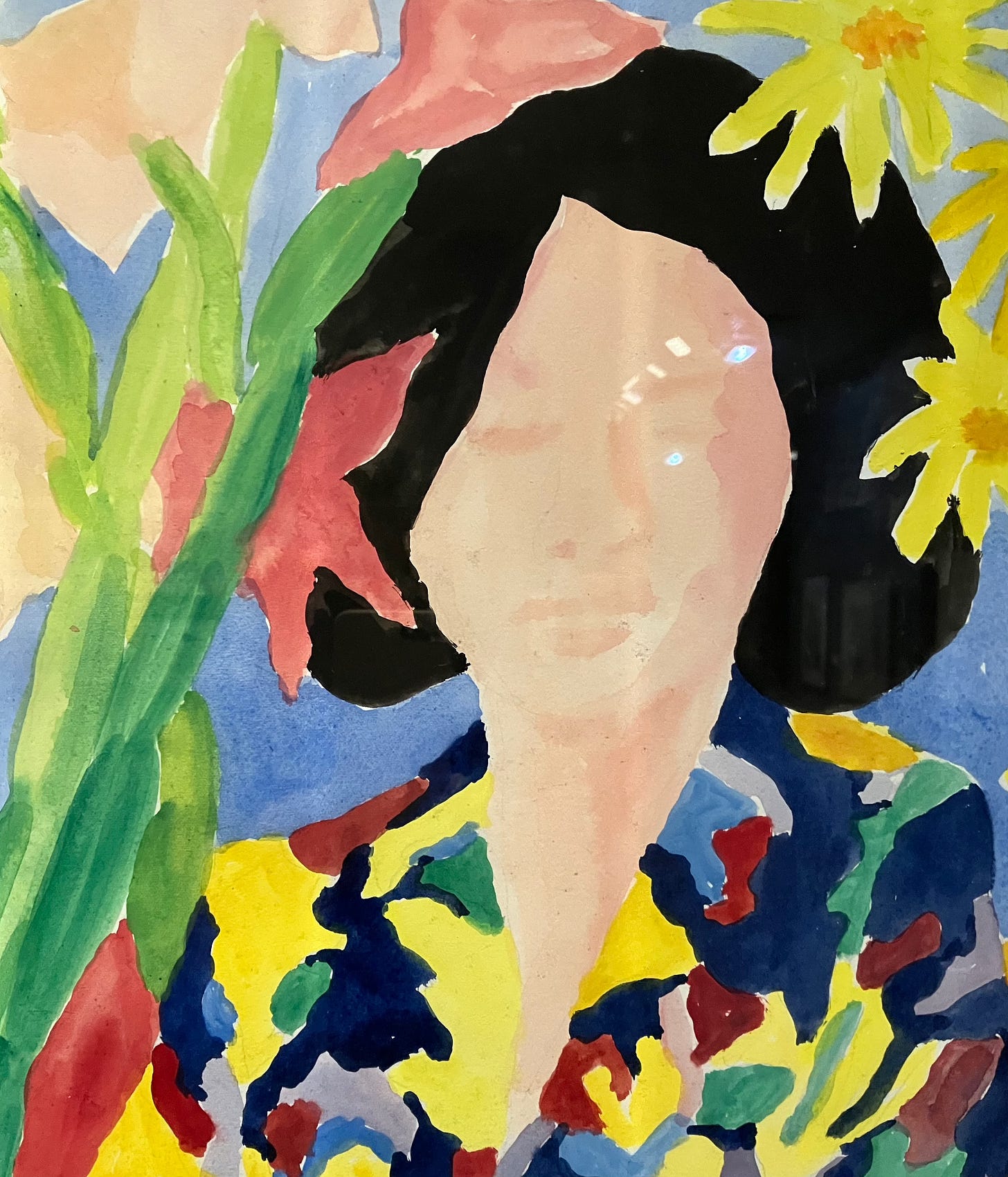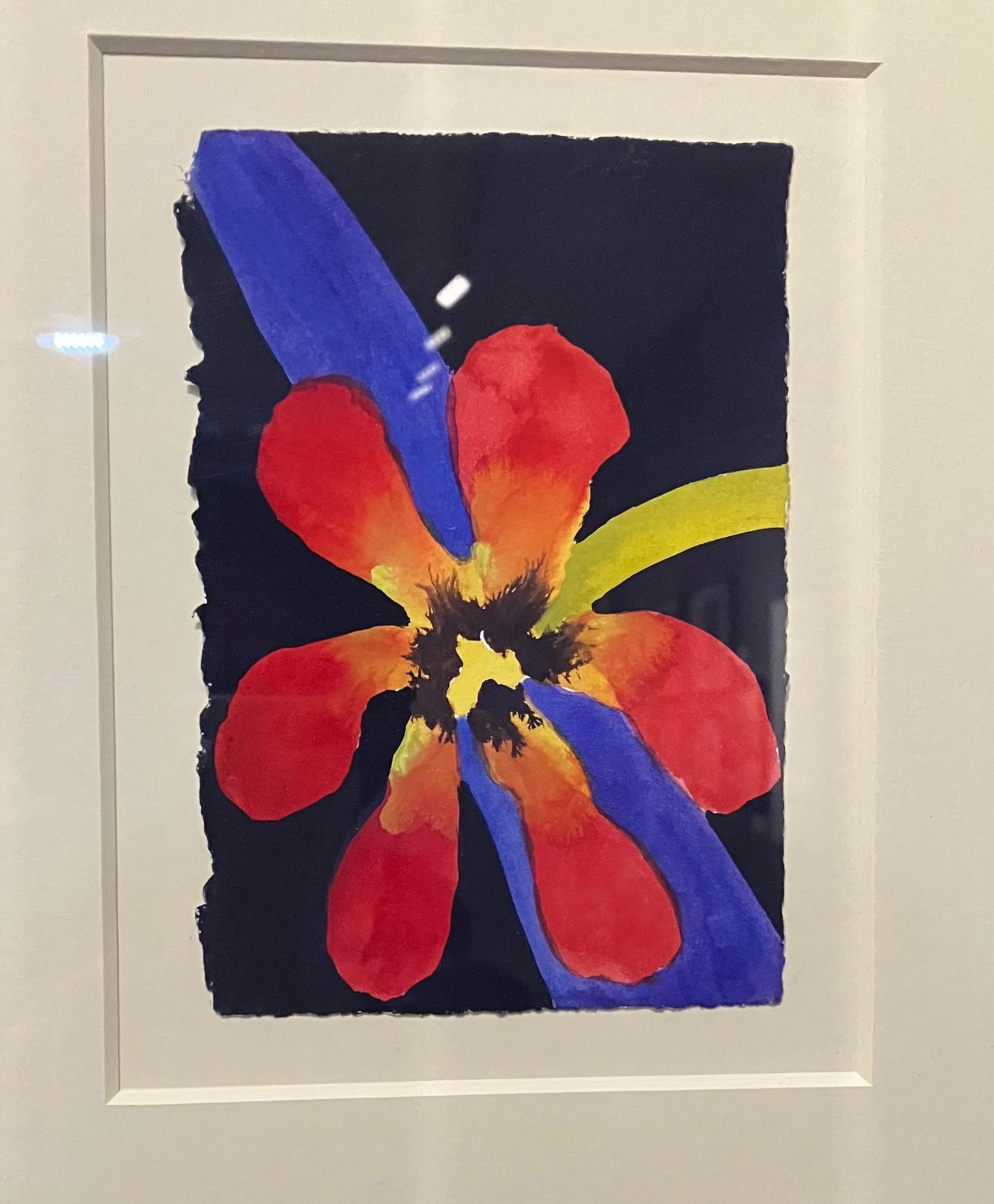This week I’m in the world of editing, but before I talk about all of that and more I’m very happy to tell you that I’ve just made the first donation - of £175.38 - to Medicins sans Frontieres!* (see acknowledgement email below at end of this post ) Thank you a million times for your support and if you haven’t but would like to join me in this venture, then just update your subscription to paid for as long or as short a time as you wish. It’s easy to unsubscribe, and you will still get all my posts as they remain free.
I’m currently working on the edit of my memoir, Handmade, so it seems like a good time to share with you what I’m actually doing when I edit. This is not a ‘How to Edit,’ piece, its no prescription, merely a list of things that happen pretty much simultaneously when I’m working, and which may be of interest to writers and readers out there.
When I edit :
I read through the text, often aloud, looking for the words to flow effortlessly for the reader.
I rewrite where it feels clumsy or unclear.
I rewrite if I have the sense that the text has got bogged down, too much of the same, no spark. I may look for a new way in, a way to break things up, add dialogue perhaps (though there is often very little dialogue in memoir, unlike fiction)
I spend a lot of time moving things around, changing the order of words or the syntax on a very micro level until I’m happy with the way it reads.
I will kill my darlings from time to time - I can go overboard with description - everything has to earn its place.
I read through again and again.
I look for words where I could do better, where I’ve been a bit lazy or possibly moved into cliche. I don’t want fanciful or obscure words but sometimes there are better words.
I look for unintended repetitions - also if I’m writing, say about the sea, and sea is inevitably repeated a lot I will try and use alternatives where appropriate: ocean, water, estuary, channel, tide.
I look at my punctuation - I’m not great in the punctuation stakes. I’m terrible with commas so I try to be aware of that. I look out for necessary paragraph breaks. Writers sometimes forget to paragraph their work sufficiently.
I sometimes go to Print View to see how the text looks on the page. I like white space, especially important in this memoir which I conceived of as fragmentary - paragraphs give me white space, as does double spacing for a shift in time or place.
I look for ways to be concise and not over complicated so that the writing breathes. This is the kind of writing I want to read - my personal style means I often cut what I think are unnecessary words.
Because of this, because I know I have a tendency to be very spare, I’m also looking for gaps or holes or places where I need to say more. Places where I could enrich the text.
I’m looking where possible for a certain flow, the connection between one piece and another.
I’m also looking for balance and pattern between the memoir story and the contemporary pieces which reflect on now, which centre on my garden and being a grandmother. The contemporary pieces have to be threaded through at intervals, they can’t just disappear for the last third of the book say. If you establish a pattern you need to honour it. This means I may sometimes be moving pieces around.
It’s important for me in this memoir to get at the truth where possible. I owe it to myself and to my reader so I’m looking for truth, for authenticity - if anything leaves me unsure I remove it, or change it accordingly.
I’m also looking for continuity. The reader needs to know where they are in time and space - and not be confused. This is especially important if I’m moving back and forward in time. I may know where I am but does my reader? Sometimes a chapter or section title or subtitle can solve this very simply eg- January 2025.
I look at titles and see if they can be improved.
I try to leave as much times as possible between edits - I think this is crucial, so that I come to the work fresh. It’s much easier then to see what isn’t working.
I edit on the screen but at some stage I’ll print off a copy and edit that. This is an essential part of my process. Words look different on paper. I will sometimes send the work to my Kindle and read it there - again it looks different
I edit and I edit and I edit until I can edit no more - how do I know when I’ve reached this stage? I have a sense that I’m just fiddling with minutiae and I know then it’s time to stop.
A real treat last week was to come across the Nerys Johnson exhibition in the Laing Art Gallery. I was in Newcastle with friends to celebrate a birthday. We decided to have coffee in the Laing and on our way in, one of the friends, Lynne, spotted a notice and an arrow pointing to the Nerys Johnson exhibition. She of course knew who Nerys Johnson was, I didn’t have a clue. I knew nothing about her as a painter, as a keeper of Art at the Laing, later in charge of the DLI Museum in Durham, or of the debilitating arthritis she suffered throughout her life. After coffee, we took the stairs up to the Watercolour Room and the exhibition, Nerys Johnson:Disability and Practice; to a feast of colour and line, fit to brighten any cold January day. It was entrancing and inspiring and I’m so glad we didn’t miss it.
Last week you may have read the sad news that the Irish poet Michael Longley has died. His friend, Seamus Heaney, described him as, ‘custodian of griefs and wonders.’ I love his work. When I read Michael Longley I want to go away and write poems just like his. Here is the unmissable BBC film - Where Do Poems Come From, about his life in Ireland and his work. I hope you find time to watch. I guarantee it will speak to your heart.
As always, thanks for reading -
- and extra thanks for your generous support. I will hopefully be adding to the total with further donations/subscriptions here but also with workshop fees I earn as the year progresses
Avril x
*Dear Avril,
I want to say a huge thank you for your donation of £175.38 to Médecins Sans Frontières / Doctors Without Borders (MSF).
After a traumatic injury, when every second counts, your support really is life-saving.
Your donation will ensure our expert teams in conflict zones and other emergencies around the world have the equipment, supplies and training they need. As an MSF doctor, I’ve experienced myself the impact it has.
Our work is only possible because of you.
Once again thank you for your support.
Dr Javid Abdelmoneim
MSF Emergency Medicine Specialist





I visited Nerys in her home, together with artist Tom McGuinness, while researching a book on Tom. Tom helped Nerys print some of her etchings and she was a great admirer and supporter of Tom. The Laing exhibition is certainly worth a visit- inspiring use of colour and an uplifting experience. GW
So glad we had that bonus birthday visit to Nerys Johnson exhibition, and also that you are mentioning her here. Well done to Lynne for pointing us towards it! I'm glad to hear you are in good editing mode. Sounds as if you are relishing it. I look forward to reading to 'Handmade' in due course when that editing comes to fruition. All power to your elbow, pen, laptop, kindle...!